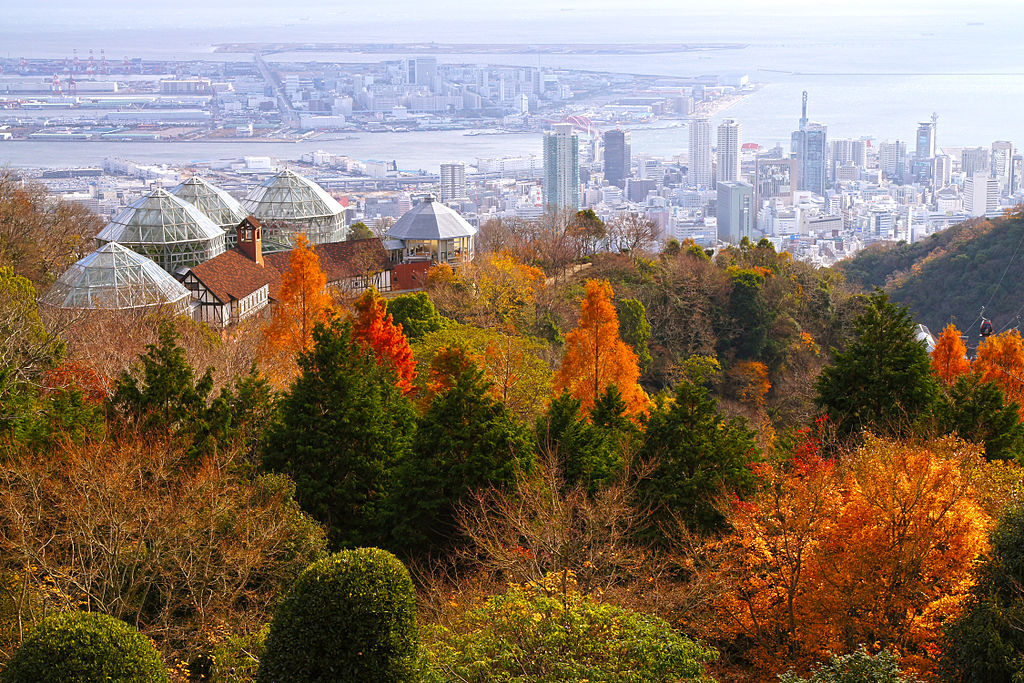Sep 14, 2017
Kobe Nunobiki Herb Gardens is a Celebration of Herbs and More

Herbs have a hallowed and honored position in Japanese culture dating back hundreds and hundreds of years. Chinese herbs first began appearing in Japan traditional folk medicines during cultural exchanges between the two ancient societies. Japanese sufferers became familiar with plants such as geranium herbs used as an anti-diarrheic and Mallotus bark that helped relieve stomach disorders.
The study and integration of Traditional Chinese Medicine in Japan came to be known as kampo. The first kampo medicines were approved for the National Health Insurance program in 1967. There were only four at the time but today there are nearly 150. Chinese liquorice is the herb used in most kampo medicines. Other common herbs are ginger and Chinese peony root.
Japanese cooks have also long relied on these tiny, seed-bearing non-woody plants for flavoring. The most favored spices used in Japanese cuisine are negi, shiso, and mitsuba. The negi plant features white parts that become sweet when cooked and the green part is used to garnish noodles, tofu, and miso soup. Shiso belongs to the mint family and is often fried as an ingredient in tempura dishes. When the seeds of shiso are dried they are used as a spice. Mitsuba is a stalk-like herb that is white and green that is a foundation of the Japanese steamed egg custard known as Chawanmushi.
More herbs than anywhere in Japan
Japan loves herbs and there is no better place to celebrate these versatile and beneficial plants than the Kobe Nunobiki Herb Gardens. Nestled on the slopes of the Rokko mountains above the city, the park boasts 75,000 herbs and flowers comprising Japan’s largest herb garden. More than 200 species of plants are distributed across 14 themed garden plots.
Autumn is one of the best times to visit Kobe Nunobiki Herb Gardens as Garden Fest takes place from September through November 26. Strolling among the gardens is an ideal way to discover herbs, taking in the fragrances and learning the traditions of these useful plants. There are plenty of benches to relax in the colorful surroundings. The fall season immerses visitors in a feast of the senses. The park features a variety of restaurants and cafes that serve dishes prepared with the seasonal herbs.
Kobe Nunobiki Herb Gardens
650-0002 Hyogo Prefecture, Kobe, Chuo Ward, Kitanocho, 1-4-3 (map link)
www.kobeherb.com
078-271-1160
More to do
There is much more to the Kobe Nunobiki Herb Gardens than enjoy herbs. A walking path winds from the mountain’s base up and across Nunokibi Falls, a midstream plunge of the Ikuta River that is one of the country’s most revered hydro-spectaculars. The river is impounded by the Nunobiki Gohonmatsu Dam and produces “Kobe water,” celebrated for its purity and high quality. The hike takes about 40 minutes to complete. Another way to tame the mountainside is inside the ropeway gondola. Whether on foot or by ropeway car, the panoramic views of Kobe City and the Seto Inland Sea will be remembered long after the herbs are consumed.
The Kobe Nunobiki Herb Gardens are open daily and there is admission required for the herb garden and the ropeway.
By 663highland (Own work) [GFDL, CC-BY-SA-3.0 or CC BY 2.5], via Wikimedia Commons


About the author